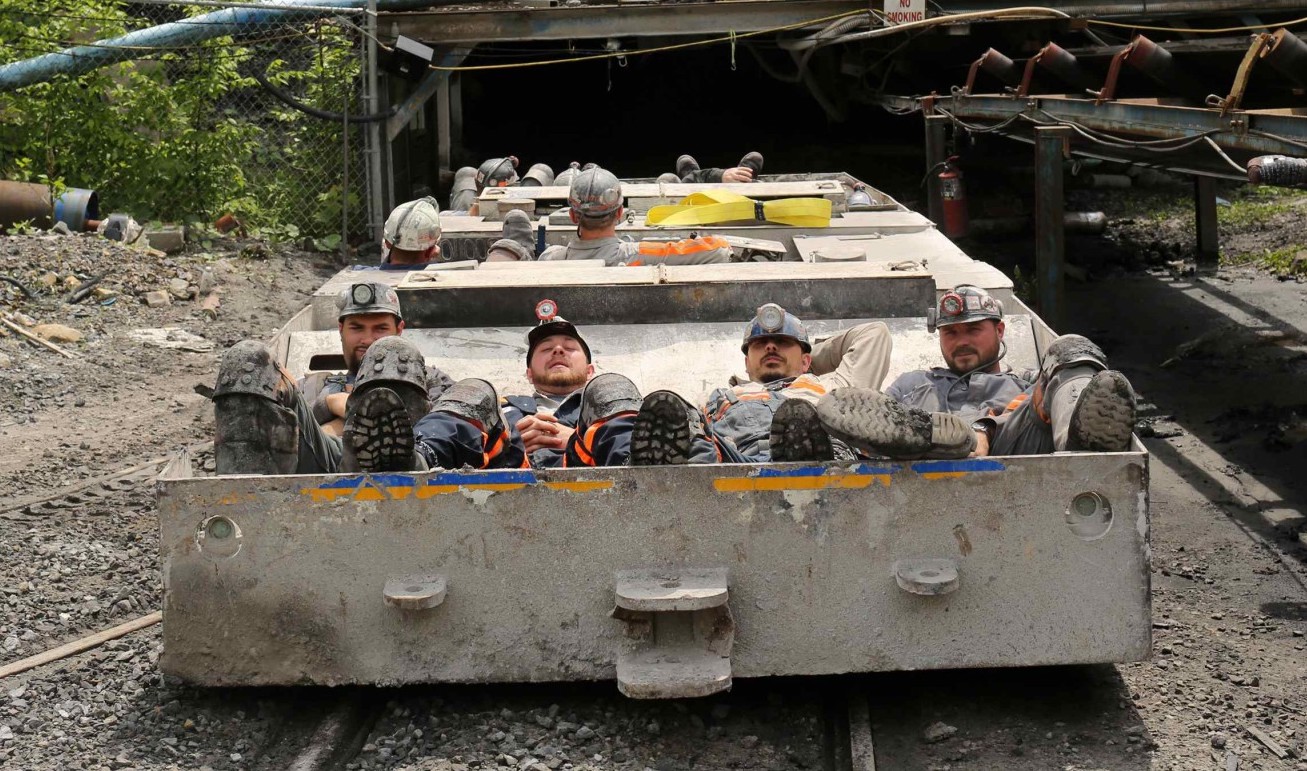Assessment of Direct Air Capture (DAC) Technology’s Contribution to SDG 13 (Climate Action)
Introduction
Direct Air Capture (DAC), a technology designed to extract carbon dioxide directly from the atmosphere, is identified by governments and corporations as a potentially crucial tool for achieving the targets outlined in Sustainable Development Goal 13 (Climate Action). However, recent data from leading developers indicates that significant economic and operational challenges are impeding the technology’s scalability, raising questions about its near-term impact on climate change mitigation.
Economic Viability and Cost Reduction Challenges
The primary obstacle to deploying DAC technology at a scale relevant to SDG 13 is its high cost. Progress in cost reduction has been substantially slower than initially projected, impacting the technology’s competitiveness and investment appeal.
- Climeworks’ Revised Projections: In 2019, the company projected costs would fall from $600 to approximately $100 per tonne by 2023. The current forecast is significantly more modest, targeting $250-$350 per tonne by 2030 and $100 per tonne by 2050.
- Industry-Wide Costs: Analysis by Bloomberg NEF indicates an even higher current average cost of $900 per tonne for the industry, with a projection of $487 per tonne by the end of the decade.
- Total Removal Costs: Climeworks’ projections do not include storage. The total cost for carbon removal is estimated to be $400-$600 per tonne by 2030, far exceeding the price of credits in mandatory carbon markets.
Operational Capacity vs. Global Climate Goals
A vast gap exists between the current operational capacity of DAC facilities and the scale of carbon removal required to meet international climate targets, as estimated by bodies like the International Energy Agency (IEA).
- Current Global Capacity: Approximately 100,000 tonnes of maximum annual output is available across 40 facilities worldwide.
- IEA 2050 Requirement: An estimated 1.2 billion tonnes of annual carbon dioxide extraction may be needed by 2050 to meet climate goals.
- Plant-Level Performance: Climeworks’ Mammoth plant, the world’s largest, has a capacity of 36,000 tonnes annually but has achieved a net removal of 205 tonnes in its first 13 months of operation after accounting for lifecycle emissions.
- Future Projects: Occidental Petroleum’s upcoming Stratos facility in Texas is projected to capture 500,000 tonnes annually, representing a significant but still insufficient increase in global capacity.
Interlinkages with Other Sustainable Development Goals
SDG 7 (Affordable and Clean Energy) and SDG 9 (Industry, Innovation, and Infrastructure)
The development of DAC is intrinsically linked to goals concerning energy and innovation. The technology’s high energy consumption presents a challenge to SDG 7, while its status as a nascent “deep tech” innovation highlights the difficulties in scaling up infrastructure as per SDG 9.
- Energy Intensity: DAC is an energy-intensive process. Climeworks aims to eventually halve its energy use to 1.5 megawatt-hours per tonne, but the current demand places a strain on energy systems and could undermine net emissions reductions if not powered by clean sources.
- Innovation Hurdles: The slow progress in cost reduction and efficiency demonstrates the non-linear path of technological development. Critics also argue that focusing on DAC diverts investment and attention from the primary goal of reducing emissions at the source.
SDG 8 (Decent Work and Economic Growth) and SDG 17 (Partnerships for the Goals)
The financial health of the DAC sector affects its potential contribution to economic growth and employment (SDG 8). Its development relies heavily on multi-stakeholder collaborations, reflecting the principles of SDG 17.
- Investment and Employment: The sector is facing economic headwinds, including declining investment, which fell from $1.3 billion in 2023 to $1 billion in 2024. This financial pressure has led to job cuts at major companies like Climeworks (20% of staff) and Heirloom.
- Policy and Market Uncertainty: Political shifts and questions about the viability of voluntary carbon offset markets, which are crucial for funding, create an unstable environment for growth and investment.
- Public-Private Partnerships: The advancement of DAC technology depends on partnerships. Examples include BlackRock’s $550 million commitment to the Stratos project and Equinor’s development of DAC technology acquired from Rolls-Royce. These collaborations are essential for funding and scaling up projects.
Analysis of Sustainable Development Goals in the Article
1. Which SDGs are addressed or connected to the issues highlighted in the article?
- SDG 13: Climate Action: The article’s central theme is the development and challenges of Direct Air Capture (DAC) technology, a method designed “to extract carbon dioxide from the air” to tackle climate change and help meet “net zero targets.”
- SDG 9: Industry, Innovation, and Infrastructure: The text focuses on a “nascent technique” and “deep tech development,” highlighting the industrial and technological innovation required to scale up DAC. It discusses the infrastructure, such as Climeworks’ “Mammoth” plant and Occidental’s “Stratos” facility, which are crucial for this industry.
- SDG 7: Affordable and Clean Energy: The article points out that DAC is “energy intensive” and a key challenge is to make the process more efficient. Climeworks’ goal to “halve its energy use” directly relates to improving energy efficiency in clean technology.
- SDG 17: Partnerships for the Goals: The article illustrates the need for partnerships by mentioning fundraising efforts (Climeworks raising over “$1bn from investors”), collaborations between technology developers and energy companies (Equinor and Rolls-Royce), and significant investments from asset managers and corporations (BlackRock and Abu Dhabi National Oil Company investing in Occidental’s project). It also touches upon the role of “government funding” and “carbon offset markets.”
2. What specific targets under those SDGs can be identified based on the article’s content?
-
SDG 13: Climate Action
- Target 13.2: Integrate climate change measures into national policies, strategies and planning. The article connects DAC technology directly to the goal of “meeting net zero targets,” which are a core component of national climate strategies.
-
SDG 9: Industry, Innovation, and Infrastructure
- Target 9.4: Upgrade infrastructure and retrofit industries to make them sustainable… with greater adoption of clean and environmentally sound technologies. The entire article is about the development, cost-cutting, and scaling of DAC, which is described as a technology “crucial to meeting net zero targets.”
- Target 9.5: Enhance scientific research, upgrade the technological capabilities of industrial sectors… encouraging innovation. The article describes the process as “deep tech development” involving “years of operational data, testing and iteration” by companies like Climeworks.
-
SDG 7: Affordable and Clean Energy
- Target 7.3: By 2030, double the global rate of improvement in energy efficiency. The article highlights that DAC is “energy intensive” and that a key goal for Climeworks is to “eventually halve its energy use to 1.5 megawatt-hours,” directly addressing the need for improved energy efficiency.
-
SDG 17: Partnerships for the Goals
- Target 17.16: Enhance the global partnership for sustainable development, complemented by multi-stakeholder partnerships that mobilize and share… technology and financial resources. The article provides multiple examples, such as Climeworks raising “$1bn from investors,” BlackRock pledging “$550mn towards Stratos,” and the reliance on “government funding” and “carbon offset markets” to finance these projects.
3. Are there any indicators mentioned or implied in the article that can be used to measure progress towards the identified targets?
- Cost of Carbon Capture per Tonne: The article provides extensive data on this metric, which is a key indicator of the economic viability and scalability of the technology (relevant to Target 9.4). Specific figures include Climeworks’ initial cost of “$600 per tonne,” its revised target of “$250-$350 per tonne by the end of the decade,” and the industry average of “$900 per tonne.”
- Annual Carbon Dioxide Extraction Capacity: This measures the direct impact on climate mitigation (relevant to Target 13.2). The article mentions the current global maximum output of “100,000 tonnes,” the IEA’s 2050 goal of “1.2bn tonnes,” and the capacity of specific plants like Mammoth (“36,000 tonnes”) and Stratos (“500,000 tonnes”).
- Energy Consumption per Tonne of CO2 Captured: This is a direct measure of energy efficiency (relevant to Target 7.3). The article mentions Climeworks’ goal to reduce energy use to “1.5 megawatt-hours.”
- Financial Investment in the Sector: This indicates the mobilization of financial resources for climate technology (relevant to Target 17.16). The article states that the sector “drew $1bn last year, down from $1.3bn in 2023” and provides specific investment figures from companies like BlackRock (“$550mn”) and Abu Dhabi National Oil Company (“$500mn”).
- Number of Operational Facilities: This serves as an indicator of infrastructure development and adoption of the technology (relevant to Target 9.4). The article notes there are currently “40 facilities worldwide.”
4. Table of SDGs, Targets, and Indicators
| SDGs | Targets | Indicators |
|---|---|---|
| SDG 13: Climate Action | 13.2: Integrate climate change measures into national policies, strategies and planning. |
|
| SDG 9: Industry, Innovation, and Infrastructure | 9.4: Upgrade infrastructure and industries for sustainability with greater adoption of clean technologies.
9.5: Enhance scientific research and upgrade technological capabilities. |
|
| SDG 7: Affordable and Clean Energy | 7.3: Double the global rate of improvement in energy efficiency. |
|
| SDG 17: Partnerships for the Goals | 17.16: Enhance partnerships that mobilize technology and financial resources. |
|
Source: ft.com







